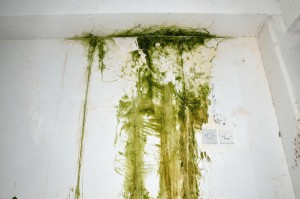What Is Mold and How to Remove it From Your Home?
 One of the things that home or building owners hear a lot of is the danger of mold building up in a structure. But what is mold exactly? And why is it really that harmful? The answers aren’t always simple, but we believe more information means more informed decisions, so we’re going to explain the fundamentals of mold and the risk it carries.
One of the things that home or building owners hear a lot of is the danger of mold building up in a structure. But what is mold exactly? And why is it really that harmful? The answers aren’t always simple, but we believe more information means more informed decisions, so we’re going to explain the fundamentals of mold and the risk it carries.
Mold is neither plant nor animal, and in fact has its own “kingdom” when classifying different forms of life, falling under the “fungus kingdom.” Fungi themselves have many different types including the mushrooms, truffles and even yeast that humans find very useful or even delicious or healthy to eat. But, as with different plants and animals, not all types of fungi are useful or harmless, and some present a danger. Mold, potentially, can be one of those more harmful types. Mold is a tiny life form that, in small numbers, is unnoticeable to the average eye, and only becomes readily visible when its food source is abundant and it is able to spread into much larger colonies.
A mold really shows off its not-quite-plant/not-quite-animal characteristics in the way it gets sustenance. Mold does not have chlorophyll, so it doesn’t require sunshine to thrive the way plants do, instead, it feeds on matter, often helping in the decomposition of dead plant or animal life. However, it doesn’t have a “stomach” of any sort either, so it doesn’t “eat” in the same way animals do.
There are three primary ways that mold can pass on contagion to people. The first is ingestion, such as when people don’t bother to check bread with mold developing on it, and unknowingly eat it. The second method is skin contact, with the risk of infection going up significantly if there are any open, exposed wounds, allowing even easier access to cells and the blood stream. The final method of contamination is through inhalation, otherwise known as breathing. Mold releases particles of itself into the air, and if you encounter a dense, mold colony, chances are there is a heavy mold presence in the air itself, and you should find some kind of filter or mask to wear before confronting the colony any further, especially in enclosed spaces that dramatically increase the density of spores in the air.
Because mold is so tiny, many people are unaware that it’s always present in our everyday lives, floating in the air, merely waiting for the right conditions to settle and begin growing a colony. This is how bread, when left alone long enough, develops mold, and how damp environments like some basements, can eventually spawn large mold colonies. Barring the sort of extreme decontamination procedures used in high tech facilities, there is very little chance of an everyday home or building eliminating mold from the air. Just opening a door or window invites mold in, since no screen is small enough to prevent the entry of microscopic mold. All you can really do is prevent the conditions that airborne mold is looking for to settle and begin a colony.
